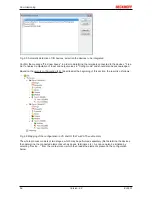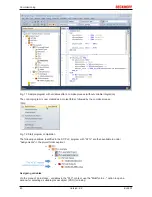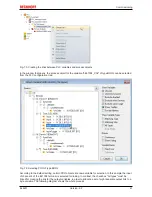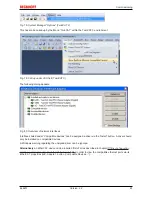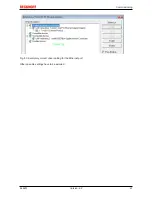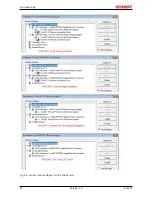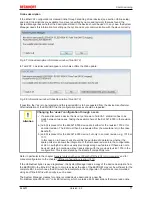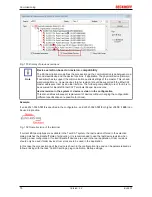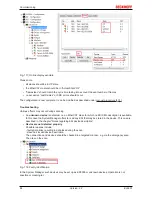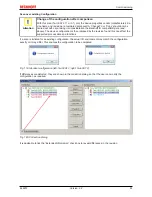
Commissioning
EL6201
70
Version: 2.2
5.2.2
Notes regarding ESI device description
Installation of the latest ESI device description
The TwinCAT EtherCAT master/System Manager needs the device description files for the devices to be
used in order to generate the configuration in online or offline mode. The device descriptions are contained
in the so-called ESI files (EtherCAT Slave Information) in XML format. These files can be requested from the
respective manufacturer and are made available for download. An *.xml file may contain several device
descriptions.
The ESI files for Beckhoff EtherCAT devices are available on the
Beckhoff website
.
The ESI files should be stored in the TwinCAT installation directory.
Default settings:
•
TwinCAT 2
: C:\TwinCAT\IO\EtherCAT
•
TwinCAT 3
: C:\TwinCAT\3.1\Config\Io\EtherCAT
The files are read (once) when a new System Manager window is opened, if they have changed since the
last time the System Manager window was opened.
A TwinCAT installation includes the set of Beckhoff ESI files that was current at the time when the TwinCAT
build was created.
For TwinCAT 2.11/TwinCAT 3 and higher, the ESI directory can be updated from the System Manager, if the
programming PC is connected to the Internet; by
•
TwinCAT 2
: Option → “Update EtherCAT Device Descriptions”
•
TwinCAT 3
: TwinCAT → EtherCAT Devices → “Update Device Descriptions (via ETG Website)…”
The
TwinCAT ESI Updater [
}
74]
is available for this purpose.
Note
ESI
The *.xml files are associated with *.xsd files, which describe the structure of the ESI XML
files. To update the ESI device descriptions, both file types should therefore be updated.
Device differentiation
EtherCAT devices/slaves are distinguished by four properties, which determine the full device identifier. For
example, the device identifier EL2521-0025-1018 consists of:
• family key “EL”
• name “2521”
• type “0025”
• and revision “1018”
Fig. 86:
Identifier structure
The order identifier consisting of name + type (here: EL2521-0010) describes the device function. The
revision indicates the technical progress and is managed by Beckhoff. In principle, a device with a higher
revision can replace a device with a lower revision, unless specified otherwise, e.g. in the documentation.
Each revision has its own ESI description. See
further notes [
}
7]
.

